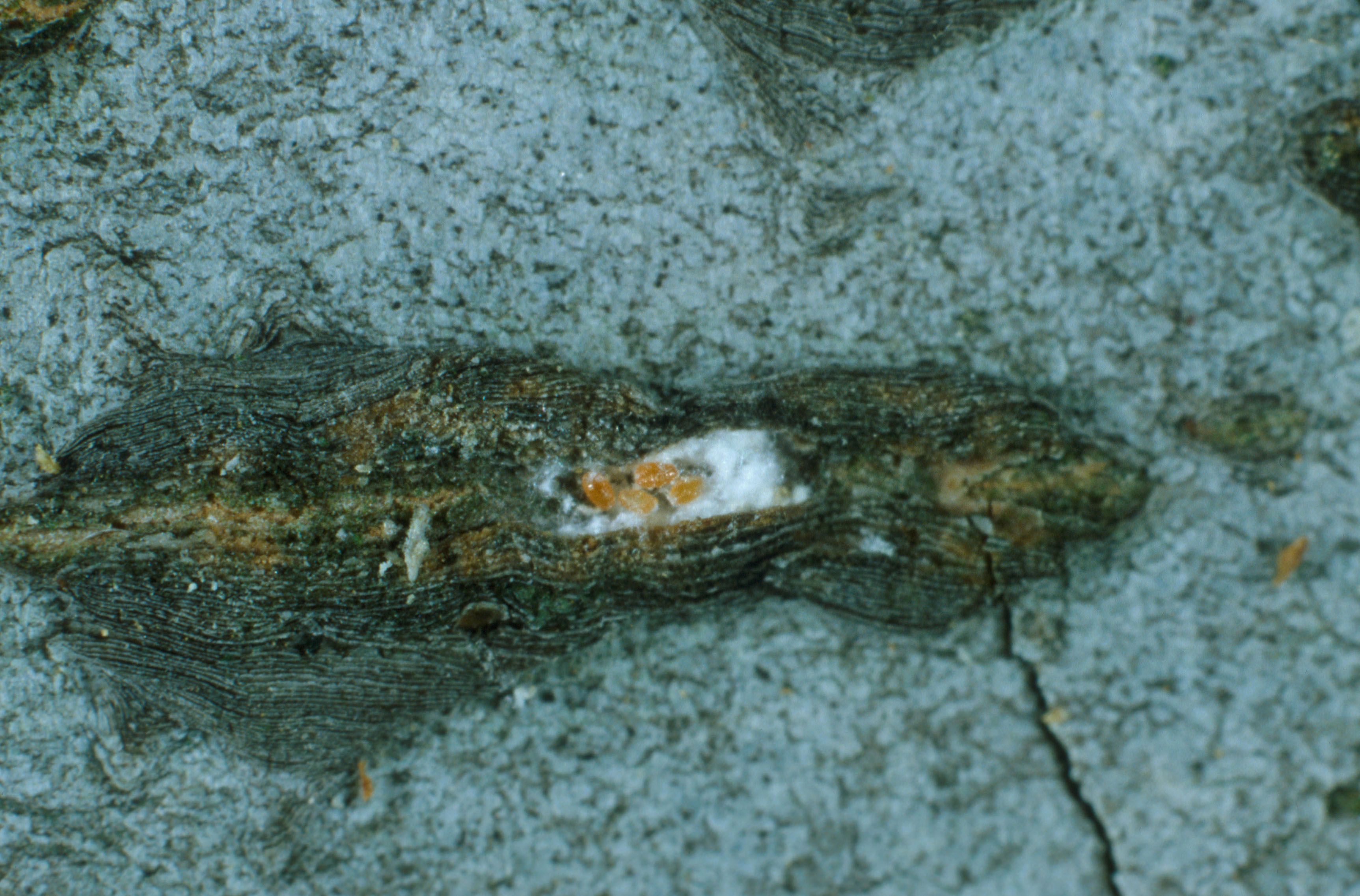Cryptococcus fagisuga
Infestation by the Buchenwollschildlaus
The Buchenwollschildlaus ( Cryptococcus fagisuga ) is a species of the family of Eriococcidae, one of the scale insects. The species is originally based on the European beech ( Fagus sylvatica ). She sits - often in colonies - especially on thin bark on exposed root approaches or branches. With their long suckers they bore to the tree and feed on the phloem sap.
Under unfavorable conditions for beech or with simultaneous fungal infection of the book the Buchenwollschildlaus can become a " pest ". The European beech is less susceptible than American beech ( Fagus grandifolia ). See below!
From the way no males have so far (2010 ) is known. The females reproduce by parthenogenesis, ie without fertilization. They are semi -spherical, have a diameter of 0.75 to 1 millimeter, are legless, wingless, yellow, and on the backs flakes / white tufts of wool wax.
From June to October, the females lay up to 50 unfertilized eggs which develop lively (mobile ) larvae, which do not have legs. These larvae can be spread by the wind and colonize suitable sites to book. You tap, also with a strikingly long proboscis, the sap of the trees on. In the spring of the second year, these larvae develop to the " mother lice ". These have no legs and only tiny sensor stub.
Injury of infested trees
See Heavily infested houses on the basis of the wool wax the Buchenwollschildlaus from afar, as if they were painted with white paint. The pierced from sucking tissue of the trees can be stimulated to form new cells and grow into cancerous growths four to twelve years later, in severe infestations. This often results in the so-called mucus flow and infection by the fungi Nectria coccinea var faginata and Nectria galligena, bacteria and other insects. Through such combinations large book can even be significantly weakened. In extreme cases, bark and bast die and detach from the wooden body. The tree dies.
Dissemination
The original distribution area of Buchenwollschildlaus in Europe corresponds to the distribution of beech from southern Sweden to Turkey. Around 1890 the Buchenwollschildlaus was introduced with plants to Nova Scotia in the northeast of the USA. It ranks up there with the invasive species and infects the American beech ( Fagus grandifolia ). By 1980, they had spread to the New England states, New York and the eastern Pennsylvania. In 1981, the species was first found in the Monongahela National Forest ( in West Virginia). In 1984, she was found in the Holden Arboretum in Lake County ( Ohio), in the following years - at low frequencies - in other parts of Ohio.










